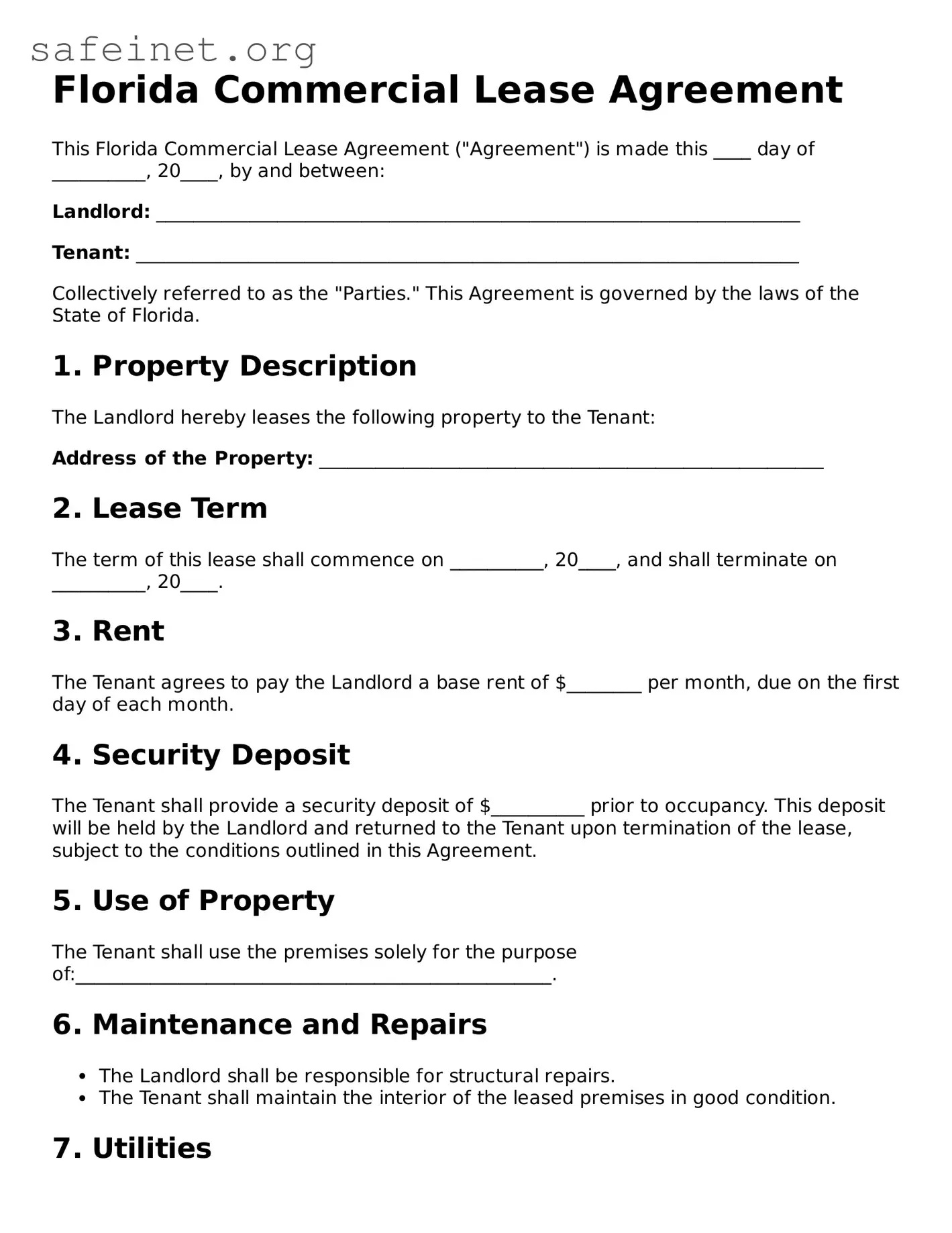Florida Commercial Lease Agreement
This Florida Commercial Lease Agreement ("Agreement") is made this ____ day of __________, 20____, by and between:
Landlord: _____________________________________________________________________
Tenant: _______________________________________________________________________
Collectively referred to as the "Parties." This Agreement is governed by the laws of the State of Florida.
1. Property Description
The Landlord hereby leases the following property to the Tenant:
Address of the Property: ______________________________________________________
2. Lease Term
The term of this lease shall commence on __________, 20____, and shall terminate on __________, 20____.
3. Rent
The Tenant agrees to pay the Landlord a base rent of $________ per month, due on the first day of each month.
4. Security Deposit
The Tenant shall provide a security deposit of $__________ prior to occupancy. This deposit will be held by the Landlord and returned to the Tenant upon termination of the lease, subject to the conditions outlined in this Agreement.
5. Use of Property
The Tenant shall use the premises solely for the purpose of:___________________________________________________.
6. Maintenance and Repairs
- The Landlord shall be responsible for structural repairs.
- The Tenant shall maintain the interior of the leased premises in good condition.
7. Utilities
The Tenant shall be responsible for all utilities, including:
- Electricity
- Water
- Gas
- Trash removal
8. Alterations
The Tenant may not make any alterations or improvements to the property without the prior written consent of the Landlord.
9. Termination
Either party may terminate this Agreement by providing written notice _____ days in advance.
10. Governing Law
This Agreement shall be governed and interpreted in accordance with the laws of the State of Florida.
11. Signatures
By signing below, both Parties agree to the terms outlined in this Agreement.
Landlord’s Signature: _________________________ Date: _____________
Tenant’s Signature: ___________________________ Date: _____________
